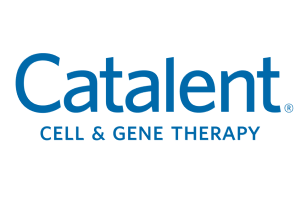This article is part of our special focus on "traditional" pharma: The Small Molecule Manufacturer (read more here). You can find more articles from The Small Manufacturer here.

The pediatric population is one group that has benefited from the industry's goal of becoming more patient-centric and, over the past 20 years, has seen gradual improvement in the number and quality of drugs available to them. In fact, over the course of the past two decades, there has been a five-fold increase in the number of pediatric drug approvals (according to Cambrex Market Intelligence, approvals increased from 10-20 per year to 50-70 annual approvals today).
Regulatory bodies are constantly working to update their guidelines regarding the implications of drug substances and excipients for pediatric patients. In the USA, Congress has passed several acts to accommodate pediatric drug development including:
1997 – the FDA Modernization Act (FDAMA) provided marketing incentives to manufacturers who conduct studies of drugs in children. It gave companies six months exclusivity in return for conducting pediatric studies.
2002 – the Best Pharmaceuticals for Children Act (BPCA) reauthorized a provision that was originally contained in FDAMA.
2003 – the Pediatric Research Equity Act (PREA) requires the pediatric assessments of new drug and biologic licensing applications for all new active ingredients, indications, dosage forms, dosing regimens, and routes of administration.
2007 – the FDA Amendments Act (FDAAA) requires that the FDA track and make publicly available certain pediatric information resulting from pediatric clinical trials.

These acts provide structure and guidance to companies developing drugs for use in children, as well as some incentives, such as a six-month extension of exclusivity on existing formulations if adequate pediatric studies are performed. PREA allows the FDA to require a pediatric formulation of a drug and the studies conducted must use appropriate formulations for each age group. The PREA Act is triggered by one or more of the following criteria: a new indication, new dosage form, new dosing regimen, new route administration, or new API. The drug application must include a pediatric assessment unless the applicant has obtained a waiver or deferral.
Globally, agencies, such as the EMA, Health Canada and Australia’s Therapeutic Goods Administration, also offer pediatric drug development guidance and regulatory requirements. If a company develops a pediatric drug product and receives approval from a USA regulatory agency and then wants to expand to Europe, for example, a separate submission for EMA regulatory agencies would be required for approval. The requirements vary somewhat by jurisdiction, therefore when developing a formulation intended for multiple jurisdictions, all requirements must be integrated into the development program.
On an international scale, however, regulatory bodies are demonstrating their desire to bolster the pediatric drug pipeline and are encouraging companies to find solutions for this patient group. In short, the problem of developing medicines for children can no longer be ignored.
When developing medicines for the diverse population of pediatric patients, it's always best to establish what the requirements of the patient are in the particular therapeutic area. The most popular drug formats for treating pediatric patients are usually:
- oral liquid formulations
- oral solid dosage (OSD) formulations, particularly fast-dissolving or chewable tablets, or capsules
- multi-particulate formulations, such as mini-tablets and stick packs
- alternative oral delivery of liquid formulations via Medibottles and dose sipping
Liquid formulations are perhaps the most common approach as they bypass some of the issues associated with OSDs, but they do have their own constraints. For example, products in this format are often much less stable when compared with OSDs, leading to a shorter shelf-life. The use of multiple-dose bottles to dispense them also introduces the risk of micro-contamination. For parents trying to administer the medicine to children, there is also the challenge of getting the child to swallow the liquid rather than spit it out! Taste masking can also be challenging with liquids, but can be helped with particle coating. By adding pH-dependent coatings to liquid formulations prior to their suspension, the liquid will not possess the taste of the API. The API will become available as the pH conditions in the GI tract erode the coating.
As new dosage forms, such as stick packs, become available, they open opportunities for companies seeking improved ways to deliver their products to pediatric patients. Stick packs are convenient to administer and also come with the advantage of making a medicine look far less like a medicine – an aspect that can encourage, in particular, pediatric patient compliance.
There is also continuing interest in fixed dose combination approaches, where more than one drug is combined into a single drug product. These products improve patient compliance by reducing polypharmacy issues, but can be even more challenging to design for pediatrics because drug-dosing recommendations may not be suitable across all weight or age groups. However, companies are now finding ways to successfully adapt these formulations so that they work well across different age groups.
Another crucial challenge for pediatric drug formulators lies in identifying safe ingredients. Importantly, while many excipients are considered safe in adult populations, the data for their use in pediatrics is either scarce or non-existent. The FDA is now expecting safety work to be done in pediatric populations for all excipients used, helping to improve the quality of medicines designed for children. Again, keep in mind that acceptance of certain excipients for pediatric products may vary by regulatory authority. Pediatric formulations must address the differences between adults and children. For example, it is not just body weight that drives dosing. Children’s metabolism differs from adults. An extended release drug product may behave much differently in pediatric populations; formulators must consider this in their design. Notable differences between pediatric patients and adults include:

- Metabolic rate is higher
- Intravascular and extracellular fluid compartments are relatively larger
- Protein binding is decreased
- Infants have proportionately higher total body water
Each of which have the potential to affect drug performance and ultimately, influence the final drug product formulation.
What does the ideal pediatric medicine look like? In my view, the ideal formulation has yet to be developed, but I think that we’re well on our way to seeing it happen. In 2020, there are more than 1,300 clinical trials underway investigating over 600 drug substances for pediatric use – a clear indicator of the industry’s progress. To maintain momentum and demonstrate that we, as an industry, are developing drugs that are appropriate for the pediatric population, we must conduct robust clinical trials with clear endpoints.
At the same time, it is important to remember how a deeper consideration for the best dosage forms for children and true patient centricity can also benefit other vulnerable patient groups. End users who have difficulty consuming traditional medications, such as stroke patients, those with degenerative diseases like Parkinson’s and Alzheimer’s, or the elderly, can all benefit from formulations that take the stress out of the drug administration process.
Securing Raw Material Supply: Plasmids for Gene Therapies
Discover how Catalent Cell & Gene Therapy recognizes challenges faced when obtaining raw materials like plasmid DNA (pDNA), and how our investments in pDNA manufacturing secure our integrated supply chain.





